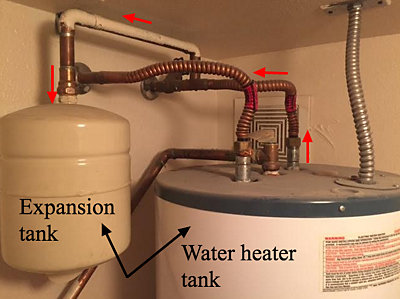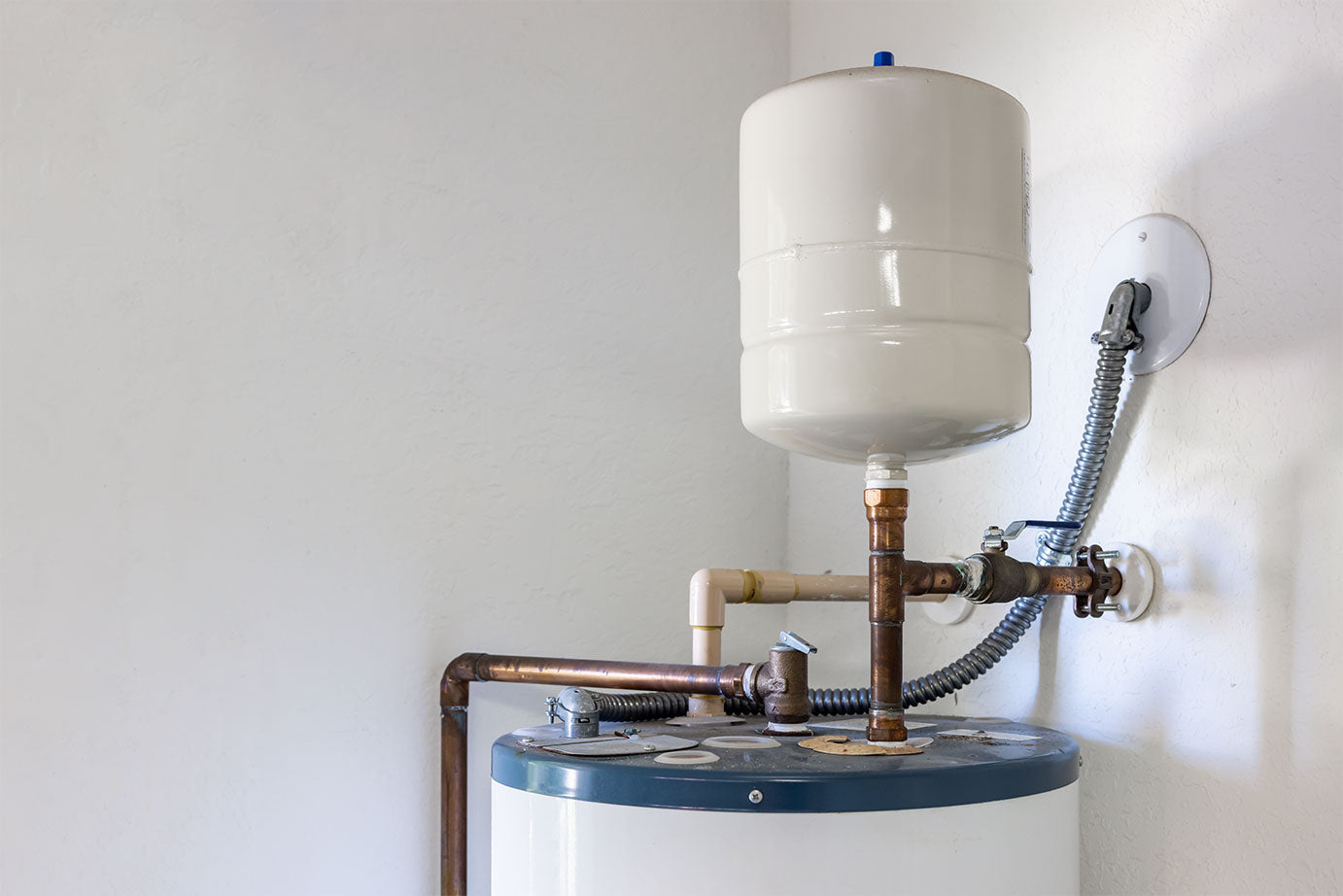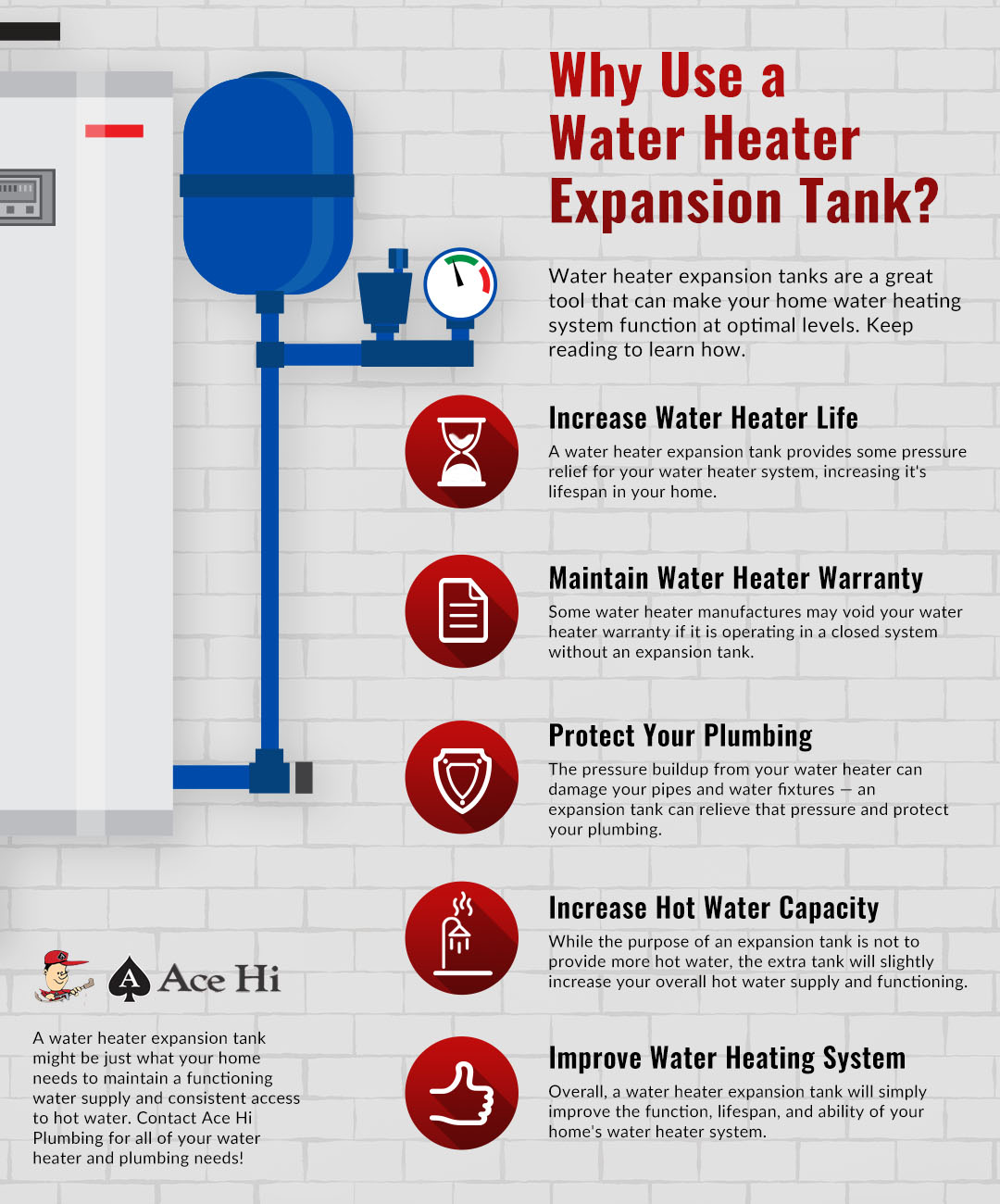Ever wondered why your home’s hot water system has an extra tank attached to it? You might think it’s just another part of the setup, but the water heater expansion tank plays a crucial role in your daily comfort and safety.
This small yet mighty component could be the secret to extending the life of your water heater and preventing costly damages. Curious about how it works and why it’s so important for your home? Read on to discover how this often-overlooked device can save you headaches and money, ensuring a reliable hot water supply for you and your family.
Page Contents
The Role Of Expansion Tanks
Expansion tanks play a crucial role in water heater systems by managing pressure fluctuations. They absorb excess water pressure, preventing leaks and damage. This ensures the water heater operates efficiently and safely.
When you think about your home’s plumbing system, you might not immediately consider the unsung hero: the expansion tank. These tanks play a crucial role in maintaining the health and efficiency of your water heating system. Without them, your home could face a slew of plumbing problems that might be costly and inconvenient.Preventing Pressure Build-up
Expansion tanks are designed to absorb the excess pressure created by the heating of water in your tank. When water heats, it expands, and without an outlet, this can cause a significant pressure increase. Think about the last time you overinflated a balloon—eventually, it bursts. An expansion tank acts like a safety valve. It provides a space for the excess water volume to go, which prevents dangerous pressure from building up. This simple mechanism can save you from potential leaks or even burst pipes. Imagine the relief of knowing that such a small component can prevent such big headaches.Safeguarding Plumbing System
Installing an expansion tank is akin to giving your plumbing system a shield. It protects your pipes and fixtures from the stress of fluctuating water pressure. Without this buffer, you might notice strange noises or even water hammer effects in your pipes. Have you ever heard a loud bang when you turn off a faucet? That’s water hammer, a common issue in systems without an expansion tank. By providing a place for expanded water to go, the tank minimizes these disturbances and reduces wear and tear on your system. Can you imagine the peace of mind in knowing your plumbing is safeguarded from damage? An expansion tank can extend the life of your water heater and pipes, saving you money and hassle. It’s a small investment with significant returns. Incorporating an expansion tank into your water heating setup is a smart move for any homeowner. Have you checked if your system has one? If not, it might be time to consider adding this crucial component.How Expansion Tanks Work
Expansion tanks prevent pressure buildup in water heaters. They absorb excess water caused by thermal expansion. This protects pipes and fixtures from damage.
When it comes to the world of home maintenance, you might have come across the term “water heater expansion tank.” These small yet mighty devices play a crucial role in ensuring your water heater operates efficiently and safely. Understanding how expansion tanks work can save you from costly repairs and extend the life of your water heater. Let’s dive into the mechanics of these essential components.Thermal Expansion Process
Water, like many substances, expands when heated. Imagine boiling a pot of soup on the stove—notice how it bubbles and rises? The same thing happens inside your water heater. As water heats up, it needs more space. Without an expansion tank, this expanded water has nowhere to go. This can put pressure on your plumbing system, risking potential damage.Pressure Relief Mechanism
This is where the expansion tank comes in. It offers an escape route for the expanding water. Inside the tank, there’s a small rubber bladder. This bladder separates the water from the air in the tank. When water expands, it pushes into the tank, compressing the air and relieving pressure. This simple yet effective mechanism prevents undue stress on your pipes and fixtures. Have you ever experienced a sudden spike in water pressure? It could be a sign your system lacks an expansion tank. Installing one can provide peace of mind, ensuring your plumbing system runs smoothly. Taking the time to understand these components of your home’s plumbing not only empowers you but also can save money in the long run. Do you think your water heater might benefit from an expansion tank? Consider consulting with a professional to assess your system’s needs.Key Benefits Of Expansion Tanks
Expansion tanks prevent pressure buildup in water heaters, protecting pipes and extending appliance lifespan. They absorb excess water, reducing the risk of leaks and damage. Efficient water management enhances overall system performance, ensuring safe and reliable operation.
Key Benefits of Expansion Tanks Have you ever wondered why your water heater sometimes seems to act up? The answer might lie in a small but crucial component: the expansion tank. Expansion tanks are an unsung hero in your plumbing system, offering several key benefits that can save you time and money. Let’s dive into why these tanks are a must-have addition to your water heater setup.Enhanced Safety Measures
Expansion tanks provide an extra layer of safety for your home. They absorb excess pressure caused by thermal expansion when water is heated. Without an expansion tank, this pressure can lead to leaks or even bursts in your plumbing system. Imagine waking up to find your basement flooded—something as simple as an expansion tank can prevent such nightmares.Prolonged Water Heater Lifespan
Adding an expansion tank can significantly extend the lifespan of your water heater. The tank alleviates stress on the heater by managing pressure fluctuations. This means fewer breakdowns and a longer-lasting appliance. It’s like giving your water heater a spa day, every day.Reduced Maintenance Costs
Who doesn’t love saving money on home repairs? Expansion tanks reduce the frequency of maintenance calls and repairs. By managing pressure, these tanks help prevent common issues like valve leaks and pipe bursts. This means fewer unexpected expenses and more money in your pocket for things you enjoy. Think about it: How often do you consider the pressure in your pipes? It’s not something that usually crosses our minds, but it’s a critical factor in the health of your plumbing system. Investing in an expansion tank can offer you peace of mind and a safer, more efficient home.Choosing The Right Expansion Tank
Selecting the right expansion tank ensures your water heater functions safely. These tanks manage water pressure changes. They help prevent damage to plumbing systems. Proper sizing and installation are crucial for optimal performance.
Choosing the right expansion tank for your water heater is crucial to ensure optimal performance and prevent potential damage. An expansion tank acts as a safety device, absorbing excess water pressure that builds up due to thermal expansion. Selecting the correct tank involves understanding key factors like sizing and compatibility with your existing water heater system. Let’s dive into these considerations to help you make an informed choice.Sizing Considerations
Proper sizing of your expansion tank can be the difference between seamless operation and a plumbing headache. The size of the tank is determined by the capacity of your water heater and the pressure of your water supply. Imagine you have a 50-gallon water heater. The expansion tank should be capable of handling the extra volume that results from heating water. A tank too small won’t handle the pressure, while one too large might be overkill. Check the manufacturer’s guidelines and consult a professional if unsure.Compatibility With Water Heater
Ensuring compatibility between your expansion tank and water heater is vital for efficient operation. Not all tanks fit every heater, so matching specifications is key. Consider the water heater’s material and design. Is it compatible with the expansion tank’s features? Additionally, review the temperature and pressure ratings of both. A mismatch could lead to premature wear or even system failure. Before purchasing, verify that the tank fits within your system’s constraints. Will it integrate smoothly with existing pipes and valves? Choosing the right expansion tank doesn’t have to be daunting. By focusing on these essential aspects, you’ll enhance your water heater’s efficiency and longevity. Is your water heater system ready for an upgrade with a new expansion tank?Installation Guidelines
Installing a water heater expansion tank can extend the lifespan of your system. Proper installation ensures optimal performance and prevents future issues. Whether you choose professional help or a DIY approach, understanding the guidelines is crucial. Explore these effective methods to achieve a successful installation.
Professional Installation Tips
Hiring a professional guarantees a safe installation. Experts have the skills to position the tank correctly. They ensure the tank is securely mounted and properly connected. Professionals use specialized tools for precise work. This minimizes the risk of leaks or other problems.
Technicians check the water pressure before installation. They ensure the tank size matches your system’s needs. They also test the system post-installation. This confirms everything operates efficiently.
Diy Considerations
DIY installation requires careful preparation. Start by reading your system’s manual thoroughly. Gather all necessary tools before beginning the task. A wrench, screwdriver, and pipe cutter are essential.
First, turn off the water supply and power to the heater. Locate the cold-water line where the tank will be attached. Ensure the tank is level and secure. Use Teflon tape on joints to prevent leaks.
Check the water pressure after installation. Make sure it aligns with the recommended levels. If issues arise, consult a professional for guidance. Proper maintenance ensures long-term efficiency.

Credit: plumblineservices.com
Common Issues And Solutions
Water heater expansion tanks play a crucial role in maintaining the optimal pressure in your plumbing system. However, like any other component, they can face issues that might hinder their performance. Understanding these common problems and knowing how to address them can save you time and money.
Identifying Faulty Expansion Tanks
You might notice strange noises coming from your water heater. Or perhaps, your water pressure fluctuates unexpectedly. These could be signs of a faulty expansion tank.
Check the tank’s exterior for visible signs of wear, like rust or leaks. A simple inspection can often reveal the problem.
If you suspect an issue but can’t see any obvious damage, gently tap the tank. A hollow sound might indicate a problem with the internal bladder.
Troubleshooting Techniques
First, ensure the tank is correctly pressurized. You can do this using a pressure gauge. A tank with low pressure might not function effectively.
If the pressure is off, adjust it to match your water system’s requirements. This simple step can often resolve performance issues.
Sometimes, replacing the tank is necessary. If the internal bladder is damaged, replacement is the best solution. Don’t hesitate to call a professional if you’re unsure about handling it yourself.
Does your tank need constant maintenance? Regular check-ups might prevent bigger issues down the line. A little attention can go a long way in ensuring your system runs smoothly.
Have you ever dealt with a faulty expansion tank? Share your experiences or tips in the comments below. Your insights could help others facing similar challenges.
Future Trends In Expansion Tank Technology
As technology evolves, the humble water heater expansion tank is witnessing a transformation. These changes are driving efficiency, sustainability, and smarter designs. Whether you’re a homeowner or a professional in the plumbing industry, understanding these trends can help you make informed decisions for your future installations.
Advancements In Design
New designs are making expansion tanks more compact and versatile. These improvements help in fitting tanks in tighter spaces, which is a game-changer for smaller homes or apartments. Imagine having an efficient expansion tank that doesn’t sacrifice space or aesthetics.
Manufacturers are also focusing on user-friendly designs. Easy installation and maintenance are becoming standard. You can expect tanks that you can install without needing specialized tools, saving both time and effort. Have you ever struggled with a complex installation? These new designs aim to eliminate that hassle.
Sustainability And Efficiency
Eco-friendly materials are gaining traction in expansion tank production. This shift not only reduces environmental impact but also promotes healthier indoor environments. Think about the peace of mind knowing your home’s components are less harmful to the planet.
Efficiency is another area of focus. Modern expansion tanks are designed to optimize performance, reducing energy consumption. You might notice a decrease in your utility bills as these efficient tanks work smarter, not harder.
Moreover, smart technology is being integrated into expansion tanks. Imagine receiving alerts on your phone about your tank’s performance. What would it mean for you to have a system that anticipates issues before they become costly repairs?
Consider these trends when planning your next upgrade or purchase. As the technology evolves, so will your options, making it easier to choose a solution that fits your needs perfectly. Are you ready to embrace the future of expansion tanks?

Credit: waterheatingdirect.com

Credit: www.acehiplumbing.com
Frequently Asked Questions
Is An Expansion Tank Required For A Water Heater?
An expansion tank is often required for water heaters. It absorbs excess pressure from thermal expansion. Check local codes and your water heater manual. Proper installation ensures safety and system longevity. Always consult a professional plumber for accurate advice.
What Happens If You Don’t Install An Expansion Tank?
Skipping an expansion tank can cause excess pressure in plumbing. This may lead to leaks, burst pipes, and water heater damage. Installing one helps absorb pressure fluctuations, ensuring system safety and longevity. Always prioritize proper installation to prevent costly repairs and maintain efficient water flow.
Why Do I Suddenly Need An Expansion Tank?
An expansion tank becomes necessary due to increased water pressure from thermal expansion in your heating system. It prevents pipe damage and ensures efficient water flow. Installing one can protect your plumbing and extend the lifespan of appliances.
How Often Should A Water Heater Expansion Tank Be Replaced?
Replace a water heater expansion tank every 5-10 years. Check yearly for signs of wear or leaks. Regular maintenance helps prolong its lifespan. Ensure proper installation to avoid frequent replacements. Consult a professional for inspection and replacement advice. Keep an eye on pressure changes for early detection of issues.
Conclusion
Understanding the water heater expansion tank’s role is essential. It protects your system from pressure changes. This simple addition can prevent costly repairs. It helps maintain a steady water flow. Your heater works efficiently with the right tank. Proper installation ensures safety and longevity.
Regular checks keep everything running smoothly. Don’t overlook this small component’s big impact. Invest in an expansion tank for peace of mind. It’s a smart move for any homeowner. Keep your water heater system in top shape. Enjoy consistent hot water every day.
Stay informed and make wise decisions.
